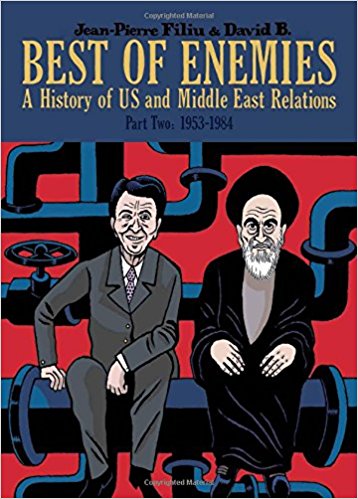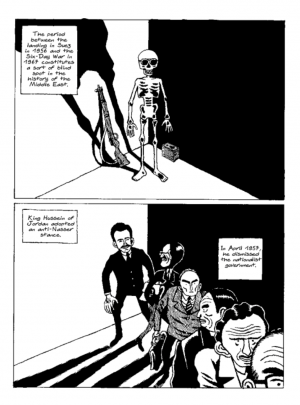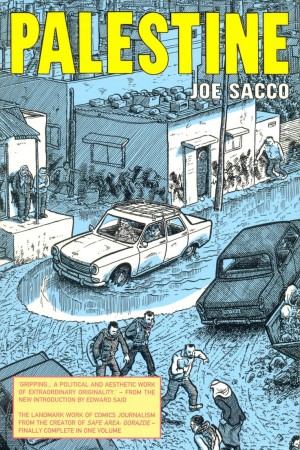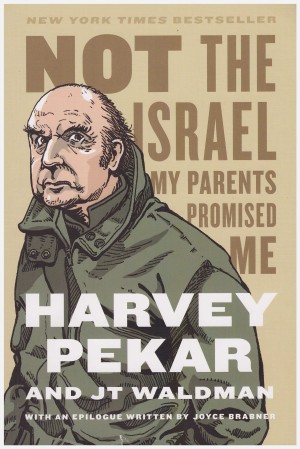Review by Graham Johnstone
The first Best of Enemies volume covered some 170 years, from the fledgling United States’ harassment by ‘Barbary Coast’ pirates, up to the post-war period and the CIA’s sinister interventions in the Middle-East. There can be few people better placed to bring this series to life than French duo Jean-Pierre Filiu, and David B. The former being an academic and expert on the region, and the latter the award winning creator of Epileptic and other graphic novels.
The first volume started engagingly with a prologue using the 4,500 year old epic of Gilgamesh to draw parallels between ancient and modern events. This second volume drops us straight into key events.
‘Six Days’, refers to the Arab-Israeli war of 1967, but traces the roots back to 1956. The overthrow of Egypt’s monarch transferred power to the anti-imperialist moderniser Gamal Nasser, who nationalised major shipping route the Suez Canal. This prompted an invasion by hostile neighbours Israel, supported by France and Britain. The US, though, with WWII General Eisenhower, now President, had its own Cold War game to play in the region. Their ‘Omega Plan’, sought to marginalise Nasser, and form an alliance with the oil-rich Saudis. They sent military support to ‘friendly’ (read ‘ideologically aligned’) regimes such as Jordan, where the King was ‘ousting’ pro-Nasserites; while subverting the new nationalist regime in Syria. If much of that sounds familiar, it’s because these actions shaped the turbulent present-day politics of the region.
‘Between the Wars’ captures the Cold War tensions playing out in the region between the US supported Israel, and the Arab countries – mostly aligned with the Soviet Union. Military conflicts continue as Henry Kissinger leads the diplomatic games for the US. This takes us to ‘1979’, a busy year across in the region, including the Iranian revolution and it’s aftermath, of which we get a complimentary account to Marjane Satrapi’s childs-eye memoir Persepolis. We move into the next decade with ‘Lebanon’ 1982-84, focussing on a country, and its capital Beirut that was so devastated as to become the era’s symbol of life in a war-zone. It’s a fascinating, if often depressing read, and hard to avoid the conclusion that the capitalist US wilfully destroyed socialistic movements that would have improved conditions in the area.
Of particular interest for British readers is the subtext of the UK’s relationship to its prodigal offspring, the US. The targeting of American vessels for piracy seen in volume 1, was fuelled by Britain letting hostile forces in the region know that the newly independent US was no longer under it’s protection. By the start of this volume, the scales have fully tipped, as US opposition compels Britain to withdraw its forces from Suez – a major humiliation, and a turning point towards the wind up of the British Empire.
That’s a huge amount of fascinating history, politics, economics, and (let’s not forget) human cost crammed into these hundred small pages. It’s an impressive feat from Filiu, that’s more than matched by B who puts to good use his mastery of symbolic depictions of complex relationships, and a childhood fascination with battle scenes. However, with some events playing out across several countries, and multiple internal factions, more use of more maps and schematic infographics for such sequences would have been welcome.
Best of Enemies is both a fascinating account of events that still impact on the world, and a master-class in the power of comics to bring these events to life. Nevertheless, the sheer intricacies of actions and motives means it requires following very carefully, and that density impacts on readability.





